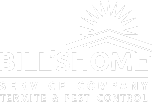Grasping the Termite Threats in Green Valley, Arizona
As you ponder acquiring a new residence in Green Valley, Arizona, it’s crucial to grasp the termite hazards specific to this locale. Termites, with their insatiable appetites, pose a widespread issue across numerous areas of Arizona, Green Valley included. These hidden marauders can wreak considerable havoc on a property, potentially leading to expensive repairs if not identified promptly.
Incidence of Termites in Green Valley and Neighboring Regions
Green Valley, akin to much of southern Arizona, is a breeding ground for termite activity. The warm climate and comparatively mild winters create an optimal environment, allowing termites to flourish all year round. Prospective homeowners should be cognizant of the heightened likelihood of encountering termites in Green Valley relative to other locales. Regular termite evaluations are indispensable in such high-risk zones to ensure that any incipient infestations are spotted and tackled expeditiously.
Climatic Factors Contributing to Termite Infestations
The arid climate of Green Valley can be deceptive in terms of termite risk. Despite the seeming dryness, numerous termite species are proficiently adapted to such conditions. Subterranean termites, for example, construct extensive underground colonies and can infiltrate structures through minuscule foundation cracks or soil-to-wood contact. The consistent warmth permits these colonies to remain active throughout the year, unlike colder climates where termite activity may be seasonally curtailed.
Prevailing Types of Termites in Green Valley
In Green Valley, subterranean termites predominate, residing and journeying through the soil, making it simpler for them to invade homes undetected. Drywood termites also lurk in the area; they typically infest the dry timber of edifices, furniture, and wooden floors. Each termite variant presents distinct challenges, necessitating thorough inspections by adept professionals to identify and address these threats effectively.
The Benefits of Termite Inspections for Homebuyers
Prior to finalizing a home purchase in Green Valley, Arizona, an exhaustive termite inspection is a pivotal step. Here’s how prospective buyers can benefit:
Revealing Hidden Damage Pre-Purchase
One of the primary advantages of a professional termite inspection is uncovering concealed damage that might not be evident during a routine home tour. Termites can severely compromise a property’s structure, jeopardizing its stability. Trained inspectors possess the expertise to recognize signs of termite activity—mud tubes, discarded wings, mangled wood—ensuring potential buyers are aware of any pest-related issues before making a commitment.
Estimating Potential Repair Costs
An incisive termite inspection report sheds light on the scope of any existent damage. This data is vital for prospective homebuyers, enabling them to estimate potential repair and remediation costs. Understanding these expenses upfront can influence negotiations and help buyers make informed decisions about their investments. Knowledge of necessary repairs can also facilitate securing accurate mortgage or home improvement loans.
Averting Future Expensive Treatments
Identifying termite infestations early allows homebuyers to take proactive measures before the situation escalates. This can preclude substantial costs involved in extensive future extermination treatments. Preventative strategies, as suggested by the inspection report, can also be implemented to safeguard the property from prospective infestations, providing the new homeowner with peace of mind.
What Happens During a Professional Termite Inspection
Inspection Process Overview
A professional termite inspection entails a meticulous examination of the property to pinpoint any signs of termite activity or damage. Initially, the inspector scrutinizes the home’s exterior, including the foundation, walls, and wooden structures in contact with soil. This preliminary review identifies areas vulnerable to termite infestations.
Subsequently, the inspector moves indoors, examining basements, crawl spaces, attics, and areas around plumbing fixtures—all common termite entry points. During this phase, the inspector searches for visible termite indicators, such as mud tubes, frass (termite droppings), and compromised wood.
Tools and Methods Employed by Certified Termite Inspectors
Certified termite inspectors utilize an arsenal of tools and methods for a comprehensive assessment. These may include moisture meters to detect damp areas conducive to termites, and thermal imaging cameras to spot potential infestations within walls non-invasively. Traditional tools like flashlights, screwdrivers, and mirrors are also often employed to access and inspect hard-to-reach areas.
Another technique involves tapping wood to discern hollow spots, indicative of internal termite damage. Advanced inspections may incorporate electronic stethoscopes to listen for termite activity inside wood.
Deciphering the Inspection Report and Next Steps for Homebuyers
Post-inspection, the inspector compiles a detailed report of their findings. This report encompasses evidence of termite activity, conditions favorable to termites, and any observed structural damage. Additionally, it offers treatment or preventative recommendations.
For prospective homebuyers, comprehending this report is crucial. Should termites or damage be detected, it may become a negotiation point with the seller, potentially for repair costs or price adjustments. In some scenarios, the expense of termite treatment or future repairs can be factored into the overall budget, mitigating any surprise costs post-purchase.
By familiarizing yourself with the professional termite inspection process, you can take decisive steps in your home acquisition journey, ensuring your investment in Green Valley, Arizona, is sound and secure.
